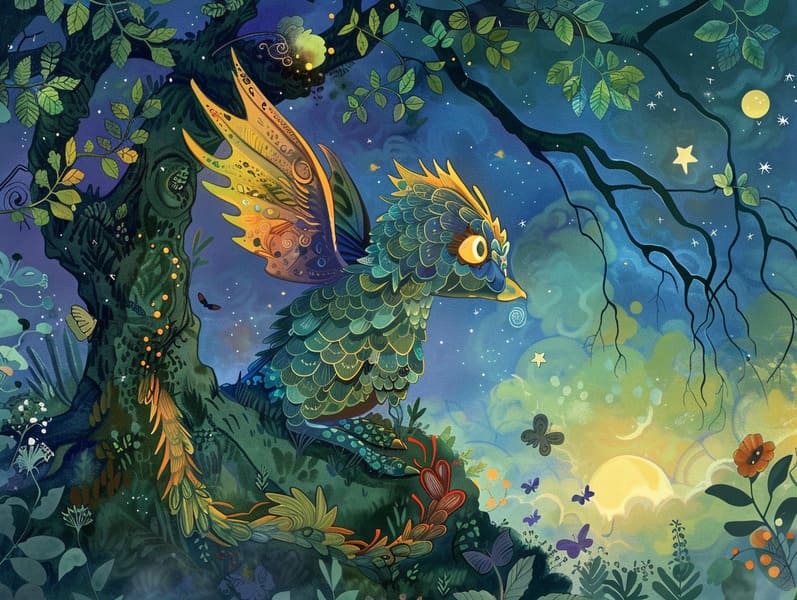The Birth of Fairy Tales for Kids and the Unending Delight.
The Birth of Fairy Tales for Kids and the Unending Delight.
Blog Article

Fairy tales for kids have long histories. These tales have been passed down from one generation to the next well before they were ever put on paper. They sprang from a variety of civilizations, including Indigenous traditions. They were initially shared among mature audiences, often carrying themes and messages pertaining to the societal norms and beliefs of the time.
The renowned Brothers Grimm, the two Grimm brothers, were among the first to compile and release many of these beloved fairy tales. Their anthology, "Grimm's Fairy Stories," included stories like "The Little Glass Slipper," "Hansel and Grethel," and "Little Snow White," which have since become hallmarks in the world of beloved fairy tales. Similarly, H. C. Andersen's fanciful tales, such as "The Mermaid's Tale," and "The Duckling's Story," have gained the love worldwide, guaranteeing their place in the pantheon of beloved fairy tales.
Though they are old, fairy tales remain as impactful as ever, especially as bedtime stories for kids. These delightful tales are now available in many formats, including gorgeously illustrated books, magical animations, and online fairy tales.
Their lasting presence can be linked to several charming aspects:
Moral Lessons: Classic fairy tales often teach important moral lessons. Narratives like "The Tale of the Boy Who Cried Wolf" teach the virtue of honesty, while "The Race of the Tortoise and the Hare" stress the virtues of tenacity and modesty. These tales offer the young clear distinctions between correct and incorrect, shaping their moral compass in a mild yet important way.
Empathy and Understanding: Traditional fairy tales frequently include individuals facing difficulties and adversities, urging listeners to resonate with their struggles and boost their triumphs. For instance, "The Story of Beauty and the Beast" demonstrates the necessity of valuing inner qualities to know the real character of a individual, fostering insight and comprehension.
Cultural Awareness: Many traditional fairy tales are interwoven with the cultural contexts from which they were born. Understanding these narratives can provide delightful insights into different societies, encouraging a sense of international awareness and knowledge.
Inventiveness and Imagination: The fantasy-filled elements in traditional fairy tales—magical kingdoms—enliven children’s imaginations. These stories transport readers to fantasy realms, engendering innovative dreams and a sense of wonder that remains a lifetime.
Ancient fairy tales are not only enchanting but also edifying. They function as alluring tools in building various mind and heart abilities in the young. When timeless fairy tales are spoken, they cultivate speech development by introducing new language items and detailed sentence structures. This practice also improves hearing perception and mental focus, as children remain attentive, eager to see what happens next.
Furthermore, analyzing the themes and characters of traditional fairy tales can develop evaluative skills and evaluative skills. The young are taught to discern patterns, anticipate outcomes, and catch on to cause and effect. These talks also benefit kids communicate their thoughts and feelings, advancing their emotional intelligence.
In today’s electronic age, the abundance of internet fairy tales has made these tales more acquirable than ever. Online resources and apps give huge assortments of Grimm's fairy tales that can be browsed or listened on anytime, anywhere. Fairy tales voiced are particularly well-received, sharing an fun way for kids to enjoy these delightful tales. Audiobooks and narrated videos bring characters and settings to life, often enhanced by fantastical soundtracks and melodies that elevate the storytelling journey.
The lasting allure of ancient fairy tales lies in their ability to transform to modern days while staying true to their essential themes. Contemporary adaptations of these website stories often integrate more multicultural characters and modern settings, making them accessible to today’s audience. However, the central morals of daring, benevolence, and rightness remain unchanged, continuing to reach readers of all ages.
Ancient fairy tales also offer a sense of ease and closeness. They deliver a methodical narrative with a obvious beginning, middle, and end, often wrapping up with the closure of conflicts and the triumph of truth over falsehood. This regularity can be reassuring for kids, offering a sense of unwaveringness in an unstable world.
Ancient fairy tales continue to enthrall and enlighten new generations, maintaining their wonder and meaningfulness in modern society. As nighttime stories for kids, they extend a perfect blend of wonder and wisdom, nurturing moral values, empathy, and creativity. The presence of online fairy tales and the commonness of fairy tales recited secure that these old fairy tales remain acquirable to new generations.
By sustaining and passing on these stories, we continue to extol the rich tapestry of tales and cultural heritage. Whether you are accessing a colorful picture book, enjoying a web collection, or listening via an audiobook, the grandeur of timeless fairy tales is always within reach. These tales illustrate of the lasting strength of narratives and its ability to bring us together across epochs and places.
No matter if you are delving into a vividly illustrated book, enjoying a electronic library, or listening to an audio story, the delight of famous fairy tales is always within reach.
These narratives demonstrate of the consistent essence of tales and its ability to join us across time and space, forging a link that captivates and teaches alike.